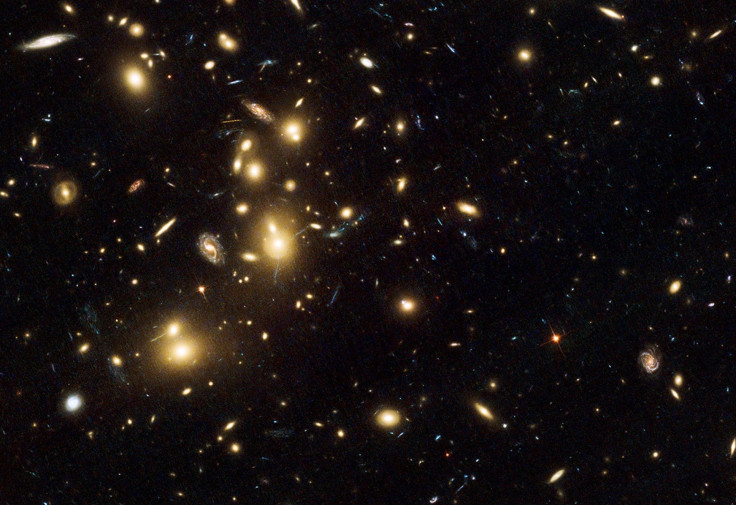NASA Telescopes To Use Natural ‘Zoom Lenses’ To Hunt For Distant Galaxies In Deepest Ever Probe Of The Universe

The universe is set for the deepest ever probe into its depths as three of NASA’s space telescopes -- Hubble, Spitzer and Chandra -- are teaming up to unearth distant, previously unknown galaxies in the cosmos, the space agency said on Thursday.
According to NASA, the three telescopes will use something called natural "zoom lenses" found in space to uncover galaxies that could be 100 times fainter than what its space observatories can typically identify.
Named “The Frontier Fields,” the ambitious collaborative program will make observations of six massive galaxy clusters over the next three years, taking advantage of a natural phenomenon known as gravitational lensing -- the gravitational fields of the clusters brighten and magnify distant background galaxies that are so faint that they would otherwise be unobservable.
“The idea is to use nature's natural telescopes in combination with the Great Observatories to look much deeper than before and find the most distant and faint galaxies we can possibly see,” Jennifer Lotz, principal investigator at the Space Telescope Science Institute in Baltimore, Md., said in a statement.
Astronomers expect the observations to reveal populations of ancient unknown galaxies that existed when the universe was only a few hundred million years old. According to scientists, data from the Hubble and Spitzer space telescopes will be combined to measure the galaxies' distances and masses more precisely.
“We want to understand when and how the first stars and galaxies formed in the universe, and each great observatory gives us a different piece of the puzzle,” Peter Capak, the Spitzer principal investigator for the Frontier Fields program, said. “Hubble tells you which galaxies to look at and how many stars are being born in those systems. Spitzer tells you how old the galaxy is and how many stars have formed.”
The Chandra X-ray Observatory will image the clusters at X-ray wavelengths to help determine the masses and lensing power of the clusters, as well as identify background galaxies with massive black holes.
The high-resolution Hubble data will also be used to examine the distribution of dark matter within the six galaxy clusters. Dark matter is the underlying, invisible scaffolding attached to galaxies, which is hypothesized in astronomy and cosmology to account for a large part of the total mass in the universe.
The first object to be looked at by The Frontier Fields program this month is called Pandora's Cluster (Abell 2744). This is a giant galaxy cluster, which is the result of a pile-up of at least four separate, smaller galaxy clusters that took place over a span of 350 million years.
© Copyright IBTimes 2024. All rights reserved.






















